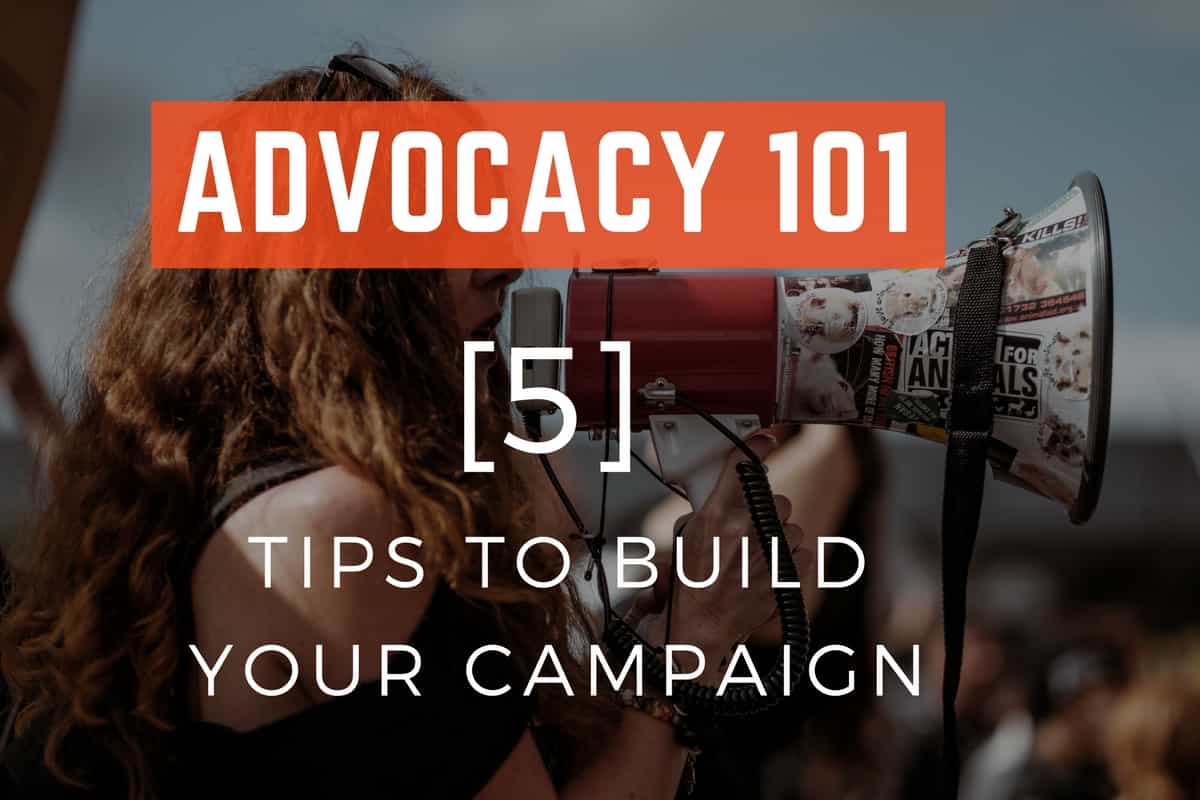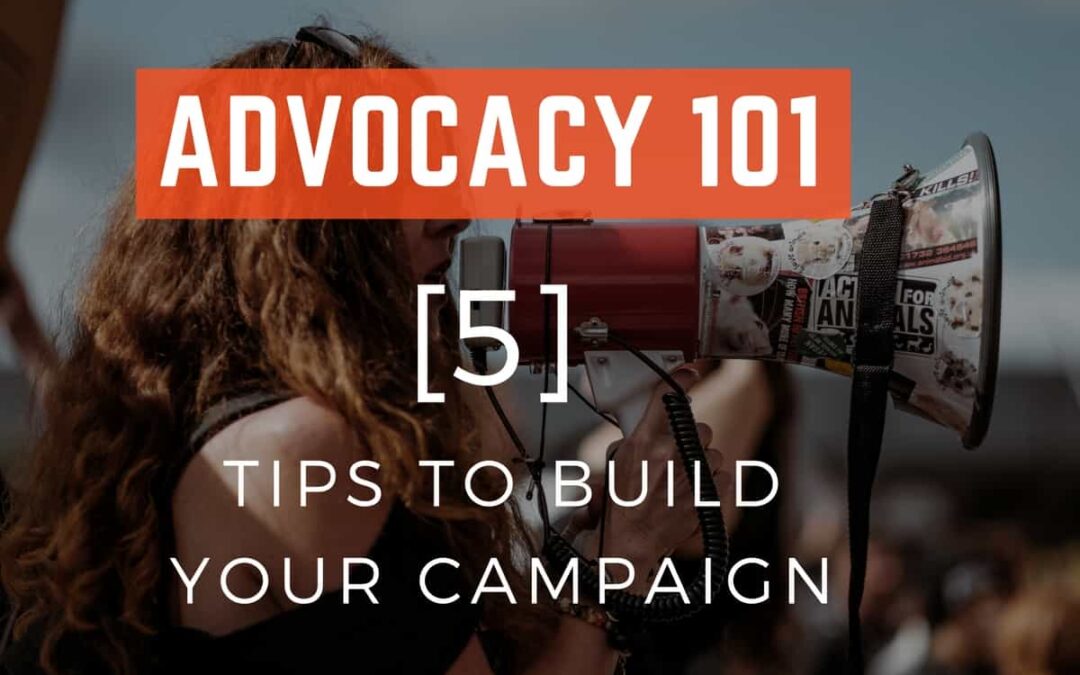Advocacy campaigns start off as a passionate attempt to right a wrong or pass a law that’ll benefit the community. But down the lane, it’s easy to lose sight of your end goal and get caught up in the myriad intricacies of running a campaign.
Vague goals, lack of supporters, flawed voter contact are all complications that advocacy organizations deal with. But with a proper timeline and plan in place to see you through to your goal, navigating these intricacies become much simpler. This article tries to help you with that through five tips to build your advocacy campaign.

Understand the issue
Before getting into active advocacy for a cause, understand the specifics related to it. If the issue is that of polluted water resources, there should be a thorough understanding of the environmental protection laws in place, harmful practices that cause well water to be polluted, and the decision makers who can affect political change. If other organizations or groups are working on behalf of the cause, know of their activities.
Identifying a specific cause lets you align your advocacy campaign toward solving it. If fracking is the specific cause for polluted well water, your campaign goal can be to get enough signatures to get a fracking ban on the ballot initiative.
Once you’ve identified the specific issue at hand, you can go ahead with creating an advocacy campaign around that issue.
Plan your timeline
You might look to get enough signatures to get a proposal on the ballot or to get your senator to vote for a particular bill. With these end goals in mind, a timeline of sub-tasks that run up to the final goal will keep you focused on the duration of the campaign.
Questions that should be on your roster:
- What are the tools I will use for my campaign?
- How am I identifying supporters?
- When should I fundraise?
- How many volunteers do I need?
- Should I conduct events and town hall meetings?…
Create a detailed plan that includes all the activities to include in your campaign that runs up to your final goal.
Voter contact and engagement
Your campaign has to reach several for it to succeed. Signature requirements for ballot initiatives can range from around 30,000 (Alaska) to upwards of 700,000 (Florida). Point being, effective voter contact, and engagement are crucial to the success of an advocacy campaign. Luckily, voter contact tools have evolved over the years to be much more efficient, both in terms of technology and affordability.
Your voter contact and engagement strategy should keep supporters in the loop throughout the campaign. This can include making phone calls to assess voter sentiment and support, text messages with campaign updates or announcements, emails describing campaign updates, and occasional in-person meetings with supporters.
With campaigns stretching on for upwards of a year, it’s easy for supporters to lose interest in the movement if they are left unengaged.
Pro Tip: Use Click to call for your advocacy campaign for better voter engagement!
Build your team
Advocacy campaigns are not rolling in money and will need a steady source of committed volunteers to see it through to the end. Dealing with a stream of volunteers who may tend to be volatile about their commitments is a tough business.
Things would be so much simpler with an in-house staff. But with a proper supporter identification and recruitment plan, your campaign can find passionate volunteers ready to spare their time for a cause they believe in.
With volunteer recruitment, it is going to be an ongoing process and it will be a while till your campaign recruits enough strength to go all out with voter contact and engagement. Include a call to actions asking for volunteers in all your voter contact material. Be it on your phone banking script, SMS text messages, emails, or social media posts, make sure to include the ask for volunteers till you meet your recruitment goals.
Tracking progress
While a timeline should help you keep yourself on track towards the end goal, your campaign will require more granular tracking to assess the effectiveness of its activities.
Your campaign activities may include:
- Has your phone banking campaign reached enough voters for this week?
- Is your campaign scaling up fast enough?
- How many volunteers did you recruit this week?
- How many in-person meetings have you had?
Track each of your campaign activities and make sure the numbers align with your timeline.
Inculcating this granular tracking into your campaign not only keeps you to your timeline but also helps volunteers and staff get a sense of achievement about their activities.
Keep these steps in mind when you are setting out to build your advocacy campaign. With a planned approach to advocacy, support of passionate supporters and effective voter engagement you can see your advocacy campaign through to a successful end.
Planning your advocacy campaign? Check out phone banking, text messaging, and SMS data collection software from CallHub. Get started for free.


